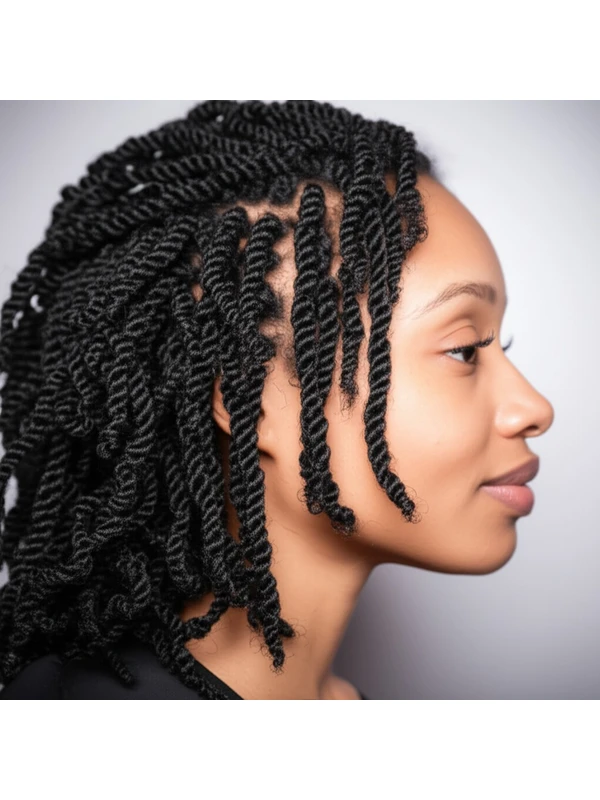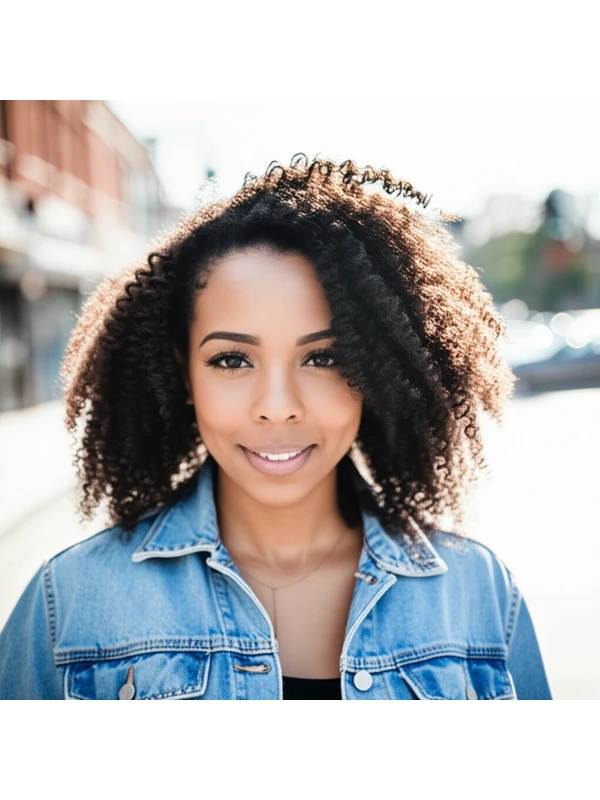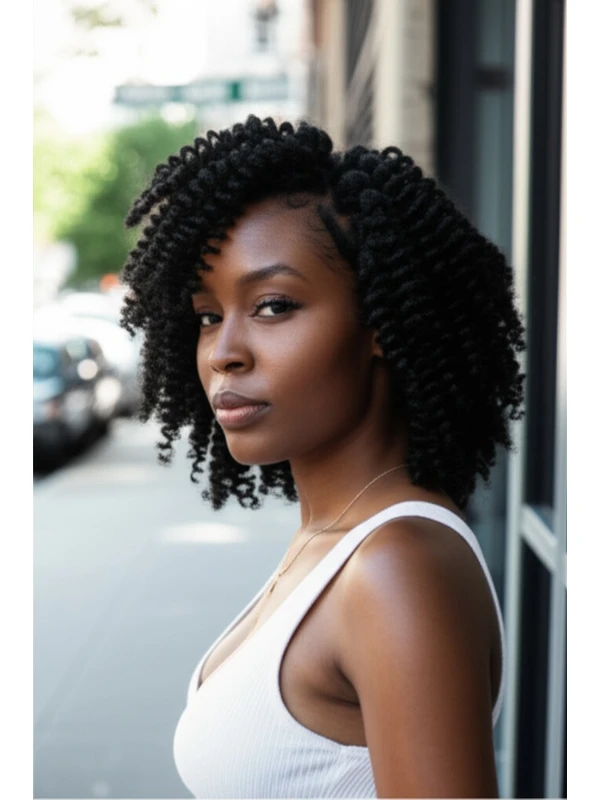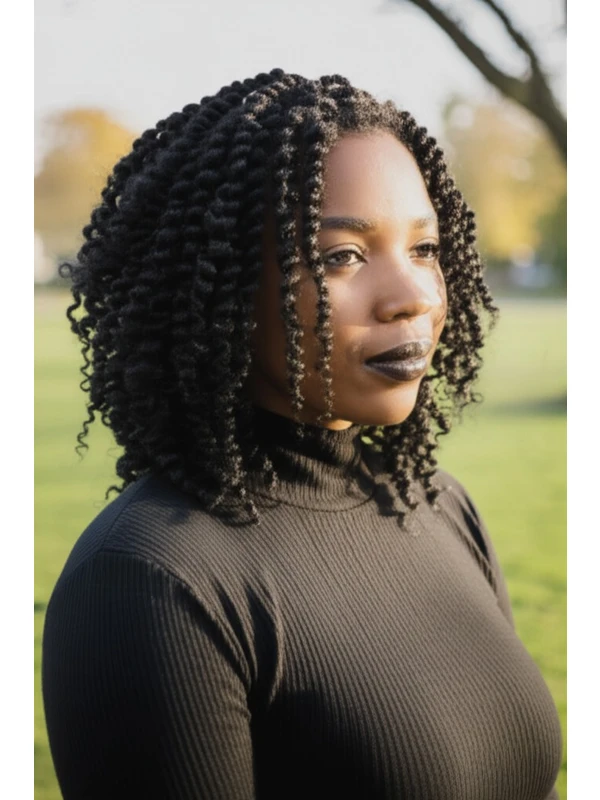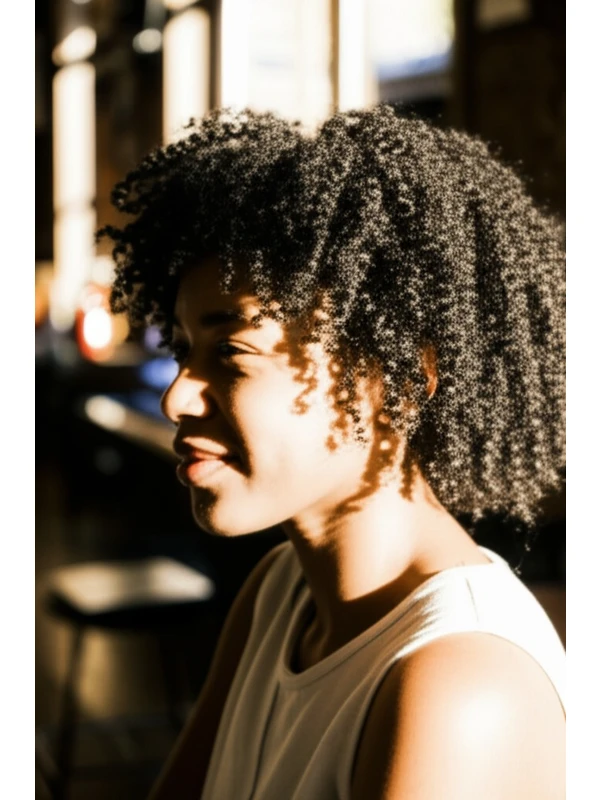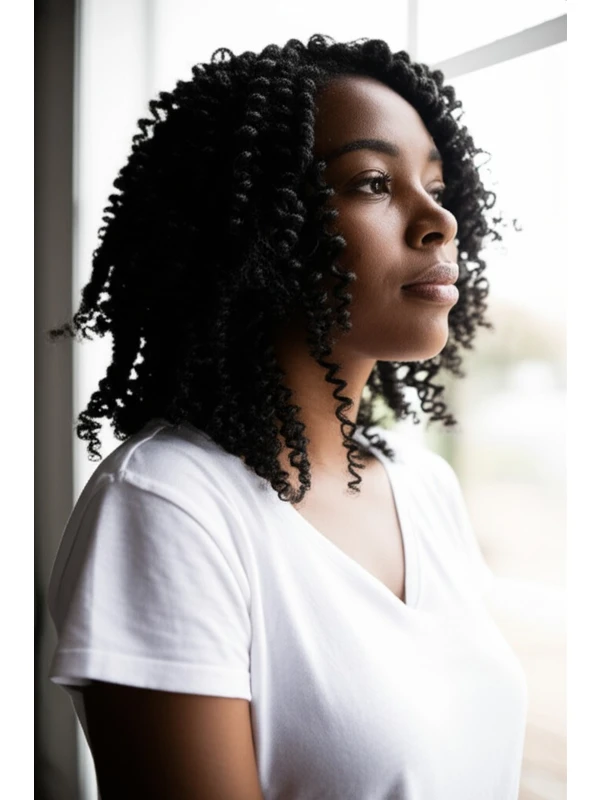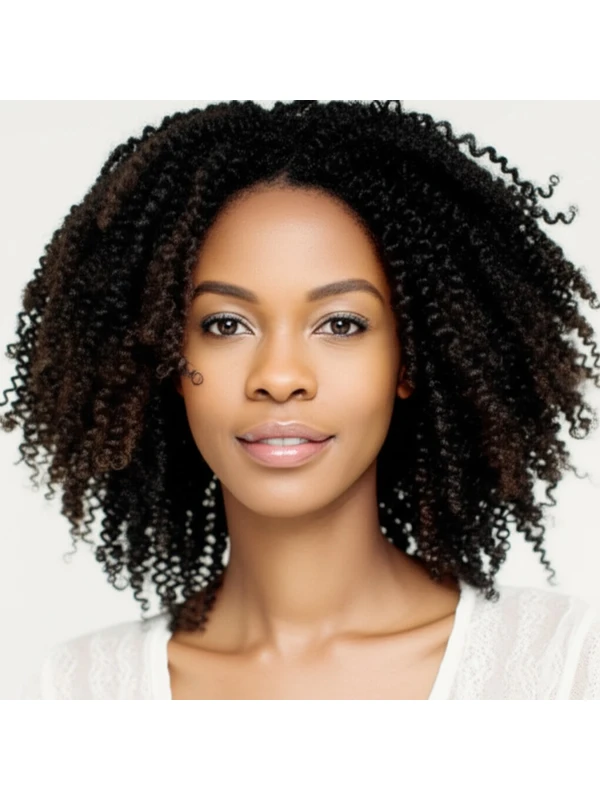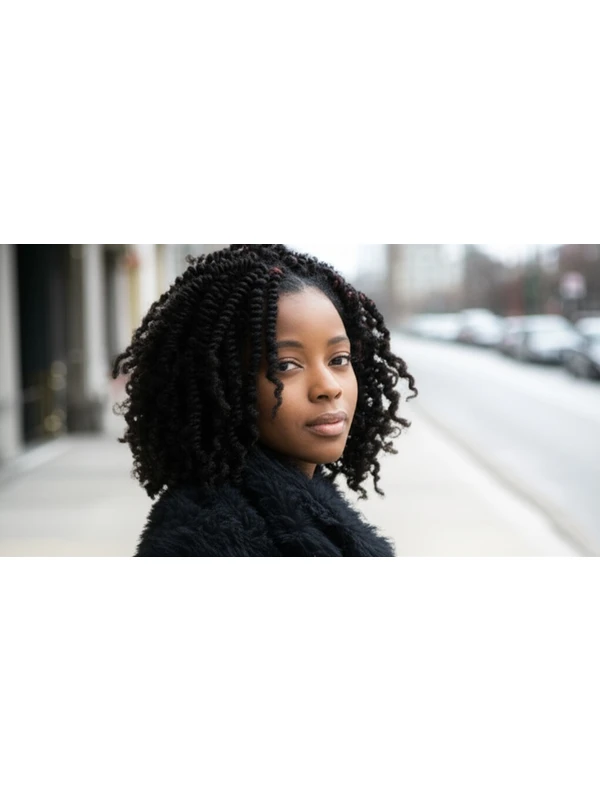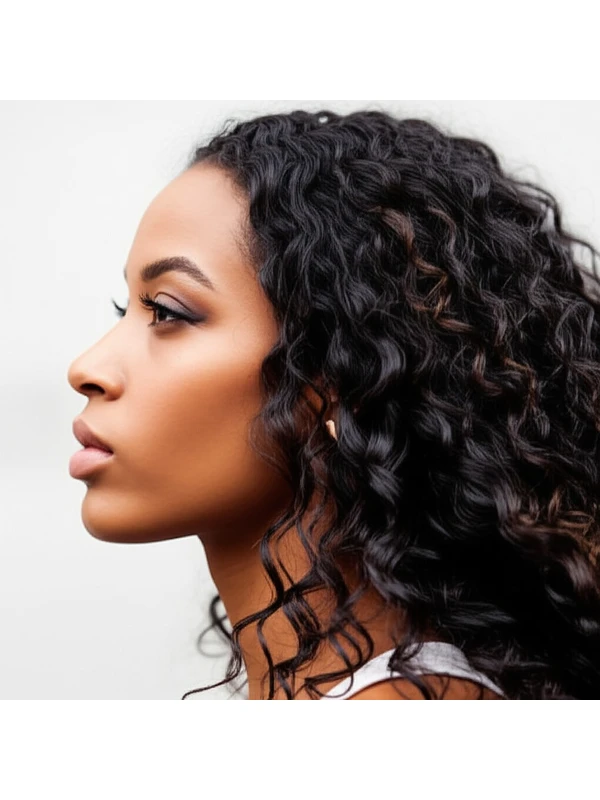#The Twist Out: A Guide to Effortless Texture
The twist out is a popular hairstyle celebrated for its natural texture and versatility. It's more than just a look; it’s a process that results in beautiful, defined curls or waves – even on hair types that don't naturally have them! This guide will walk you through everything you need to know about achieving the perfect twist out, from understanding your face shape to maintaining its gorgeousness.
#1) Background & Definition: What is a Twist Out?
A twist out is a styling technique where sections of hair are twisted together (rather than braided) and then unravelled once dry. The resulting texture mimics curls or waves; the tighter the twists, the more defined the curl pattern will be. Think of it as creating temporary, sculpted curls!
- Cut Geometry: It's not a haircut itself, but rather a styling technique applied to layered cuts (long bobs, lobs, and longer lengths work best).
- Key Features: Defined texture, volume at the roots, natural-looking waves or curls.
- Typical Length Ranges: Best suited for medium to long hair (shoulder length and beyond) as shorter lengths can be difficult to twist effectively.
- Alternative Names: Twisted Hair, Unravelled Twists
#2) Face Shape Fit: Finding Your Balance
The beauty of a twist out lies in its adaptability! However, certain tweaks can enhance your features based on your face shape.
- Oval: Lucky you! Twist outs generally look fantastic with oval faces. Experiment with part placement (middle or side).
- Fringe/Bang Options: Soft, wispy bangs add a playful touch.
- Round: A twist out can help elongate a round face. Go for longer lengths and avoid too much volume at the widest points of your cheeks. Side parts are generally more flattering than middle parts.
- Fringe/Bang Option: A long, angled fringe that slims the face is ideal.
- Square: Soften those angles! A twist out with lots of movement and waves helps to diffuse a square jawline. Avoid harsh lines or overly structured twists.
- Fringe/Bang Options: Piece-y, textured bangs soften the forehead.
- Heart: Balance a wider forehead with volume at the chin area. A side part adds asymmetry and draws attention downwards.
- Fringe/Bang Option: A wispy, eyebrow-grazing fringe can be very flattering.
- Diamond: Twist outs showcase your cheekbones! Play with placement to highlight this feature.
- Fringe/Bang Options: A long, sweeping bang that blends into the twists is a good choice.
- Oblong: Add width with volume at the sides of your head. Avoid styles that pull hair straight up and away from your face.
- Fringe/Bang Option: A full, blunt fringe can help shorten an oblong face.
#3) Body Proportions & Height Guidance: Styling for Your Silhouette
Your body shape and height influence how a twist out will look on you.
- Petite (under 5’4”): Avoid excessive volume at the crown as it can overwhelm your frame. Shoulder-length or slightly longer lengths are usually best.
- Average (5’4”-5'8"): You have more flexibility! Experiment with different lengths and volumes to find what you love.
- Tall (over 5’8”): Longer lengths and more volume work well, creating a balanced look.
- Narrow Shoulders: Volume at the roots can create the illusion of wider shoulders.
- Broad Shoulders: Avoid adding too much volume on top to prevent looking overly bulky. Focus on softening lines with waves.
- Short Neck: Slightly longer lengths that fall below the shoulder help elongate the neck.
- Average/Long Neck: You can rock almost any length!
#4) Works Best With Hair Types & Densities: Finding Your Match
The twist out is adaptable, but certain hair types and densities benefit most.
- Straight (Type 1): Will achieve looser waves – a “beach wave” effect. Requires more product for definition.
- Wavy (Type 2): Creates beautiful, defined waves with excellent hold.
- Curly (Type 3): Enhances natural curl patterns and provides added definition.
- Coily (Type 4): Creates a looser, more uniform curl pattern than the hair naturally has – great for those wanting to stretch their coils.
- Fine Hair: Can lack hold; use lightweight products to avoid weighing down the style.
- Medium Hair: Generally styles well with most product types.
- Thick Hair: Requires more sectioning and potentially stronger holding products.
- Shrinkage (Curls & Coils): Remember that curls and coils can shrink significantly when dry! Account for this when determining length – what looks like 12 inches wet might only be 8 inches dry.
#5) Styling Variations: From Casual to Chic
The twist out is incredibly versatile. Here's how to customize it:
- Sleek vs Textured: Use a heavier styling cream for a sleeker look, or lighter oils and mousses for more texture and definition.
- Middle vs Side Part: Side parts add asymmetry and volume; middle parts offer balance.
- Fringe Variations: Soft, wispy bangs, blunt fringes, or no fringe at all – it's your choice!
- Occasion Styling:
- Casual: Let the twists fall naturally for an effortless vibe.
- Office: Tuck in some twists or use a scarf to create a more polished look.
- Evening: Add shimmer spray or decorative pins for extra glamour.
#6) Maintenance: Keeping Your Twist Out Fresh
- Trim Cadence: Every 8-12 weeks, depending on growth and ends.
- At-Home Routine: Wash hair every 1-2 weeks (or as needed). Apply leave-in conditioner while damp before twisting.
- Heat vs Air Dry: Air drying is gentler; if using a diffuser, use low heat.
- Product Checklist:
- Sulfate-free Shampoo & Conditioner
- Leave-In Conditioner (essential for moisture)
- Twist Styler (cream or mousse – choose based on desired texture)
- Lightweight Oil (to seal in moisture and add shine)
- Estimated Daily Styling Time: 45 minutes - 2 hours, depending on hair length and density.
#7) Grow-Out Roadmap: Evolving Your Look
- Months 1-3: The twist out will maintain its shape well. Focus on moisturizing to prevent dryness.
- Months 3-6: Length may start to affect the style’s manageability, especially for shorter lengths. Consider a trim and re-evaluation of styling techniques.
- Maintaining Shape: Regular trims are key! Refreshing twists with water and a little product between full twist outs can help maintain definition.
#8) Color Pairings: Enhancing Your Twist Out
- Warm Undertones (golden, yellow): Honey blonde, caramel brown, copper highlights.
- Cool Undertones (pink, blue): Ashy browns, cool blondes, plum tones.
- Low-Commitment Options: Balayage or face-framing highlights add dimension without a drastic change.
#9) Season & Occasion Guide: Styling for Every Moment
- Spring/Summer: Lighter products and looser twists to combat humidity.
- Fall/Winter: Heavier creams and more defined twists for added moisture and hold.
- Work: Sleek, tucked-in twists or a polished side part.
- Weddings: Romantic waves with soft curls – consider adding hair accessories.
- Parties: Fun, textured twists with shimmer spray or decorative pins.
#10) Cost & Time: What to Expect at the Salon
- Salon Time: 1.5 - 3 hours (can vary significantly based on hair length and density).
- Estimated Price Range: Relatively higher than a simple blow dry, but less expensive than some more complex styles.
#11) Pros & Cons: Weighing the Options
Pros: Versatile style, defines natural texture, relatively low heat styling, creates volume. Cons: Time-consuming to style initially, can be drying if not properly moisturized, may require product buildup removal occasionally.
#12) Salon Consultation Script: Your Questions Answered
Use these prompts when discussing your twist out goals with your stylist:
- "I'm interested in a twist out. What length and layering would you recommend for my face shape?"
- "What products do you suggest for my hair type to achieve the desired texture?"
- “Can we discuss how to style this look for both casual and more formal occasions?”
- "How can I maintain the health of my hair while styling it in twists regularly?"
#FAQs: Your Burning Questions
- Can I twist out all hair types? While most hair types can be twisted, results will vary. Straight hair requires more product and may not achieve as much curl definition.
- How long do twists need to dry completely? This depends on your hair density and length – typically 4-8 hours, or overnight.
- What if my twists aren’t holding their shape? Try using a stronger hold product or twisting smaller sections of hair.
- Can I sleep in twist outs? Yes, but consider tying them up in a satin bonnet to prevent frizz and maintain the style longer.
- How do I remove product buildup from my twists? Use a clarifying shampoo every few weeks to gently remove residue.
- What's the difference between twists and braids for this styling technique? Twists are created by wrapping two sections of hair around each other, while braids involve crossing strands over one another. The twist method generally results in looser, more natural-looking waves or curls.
